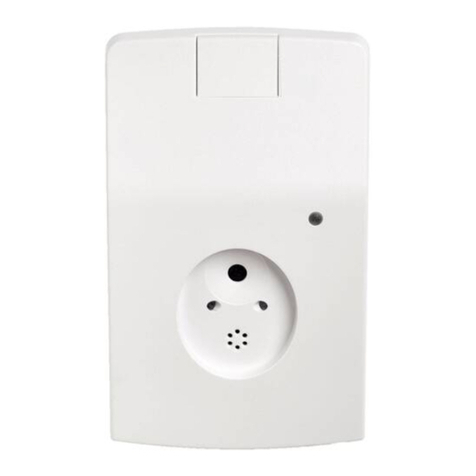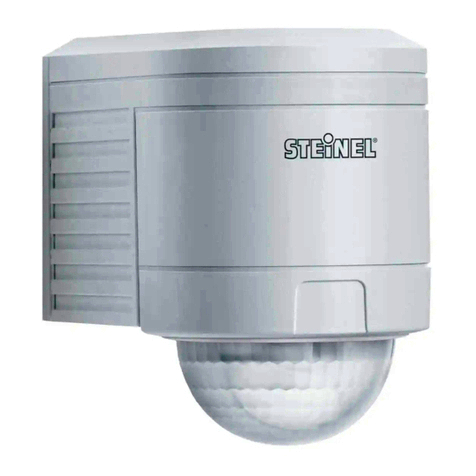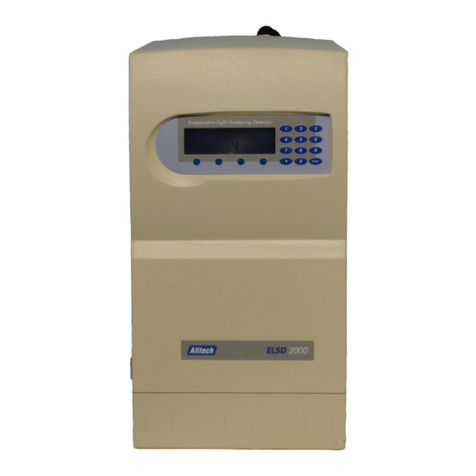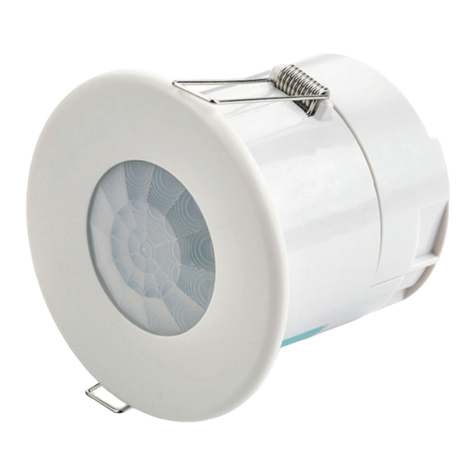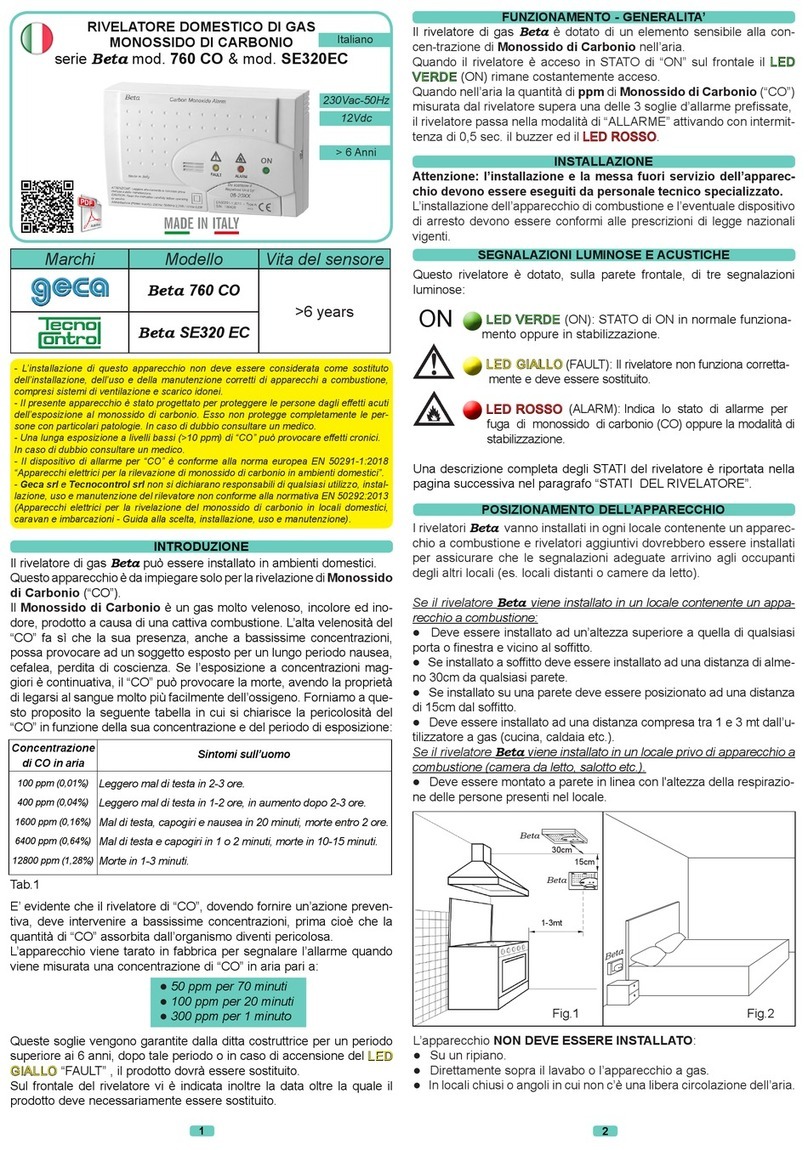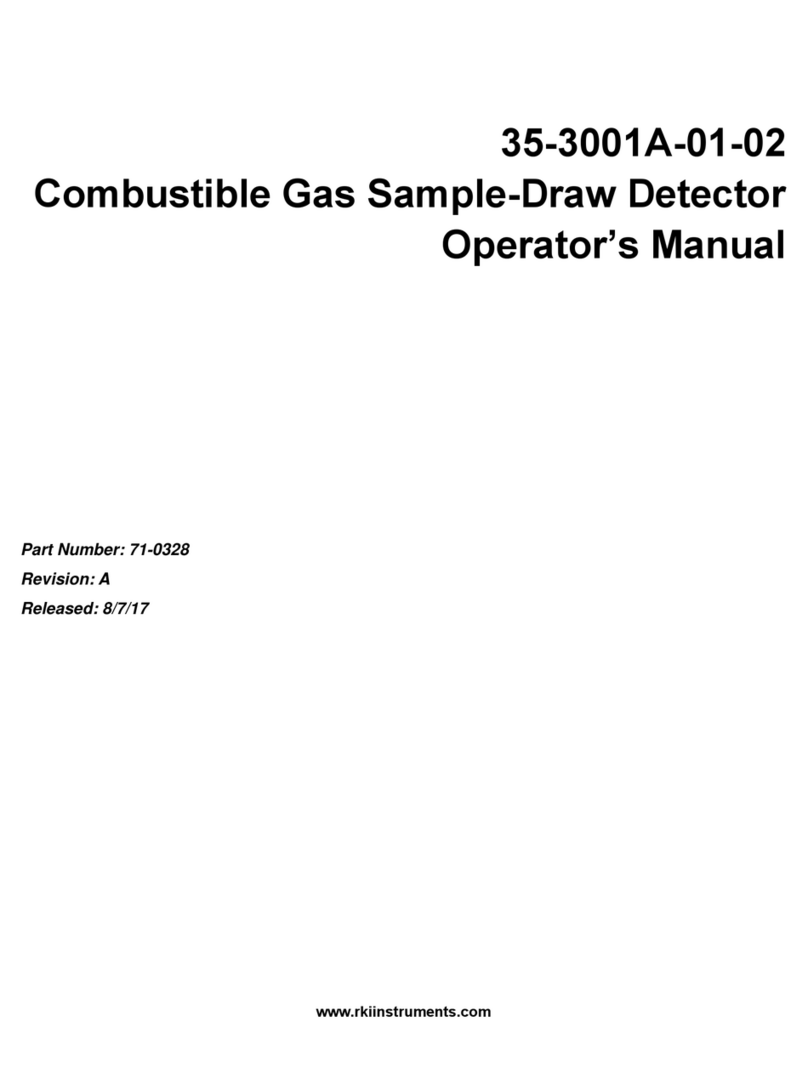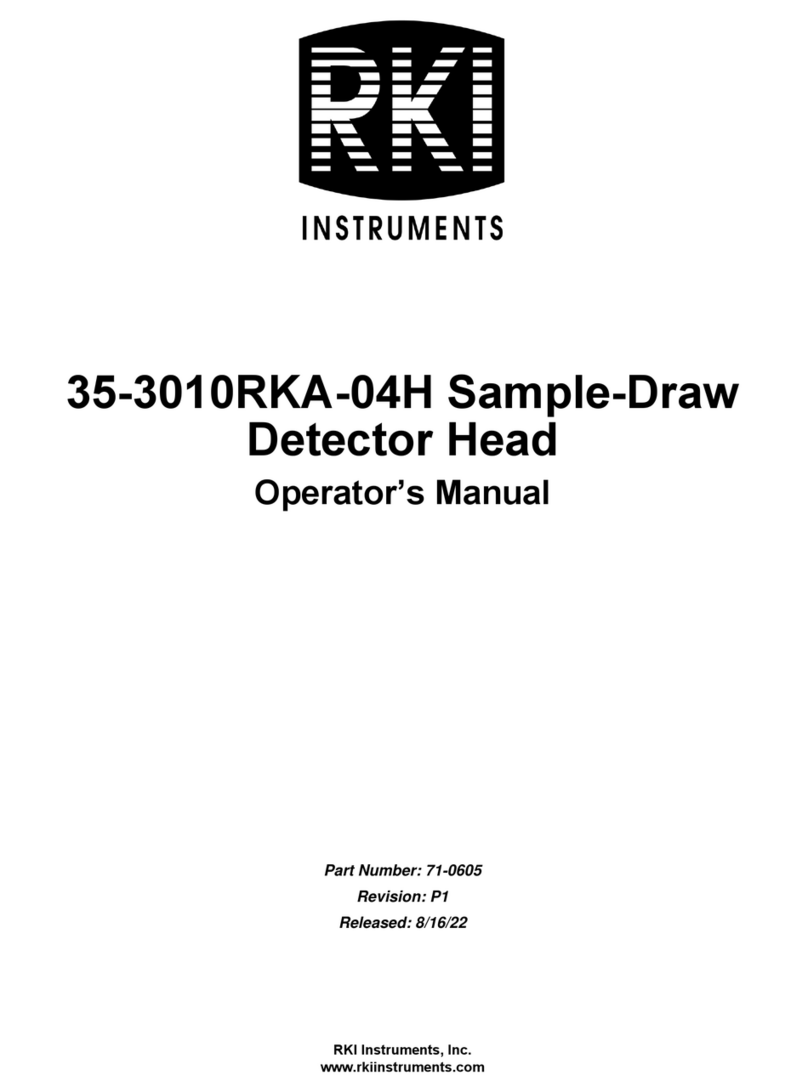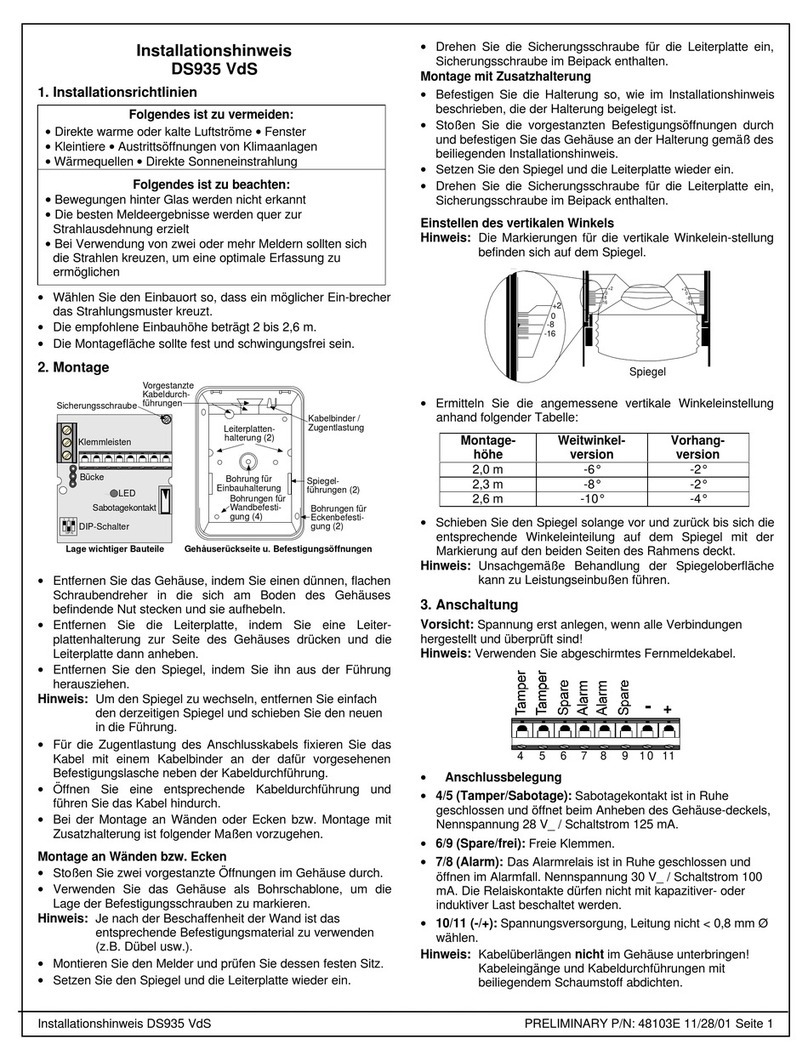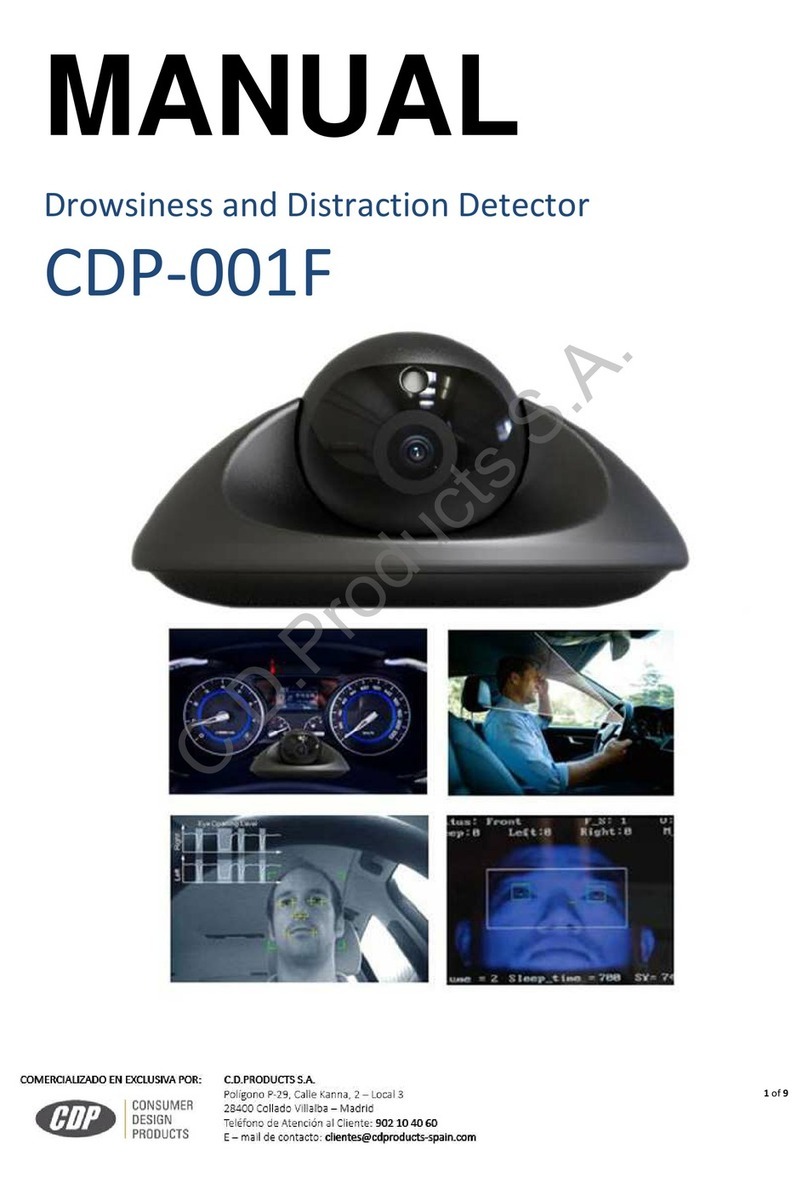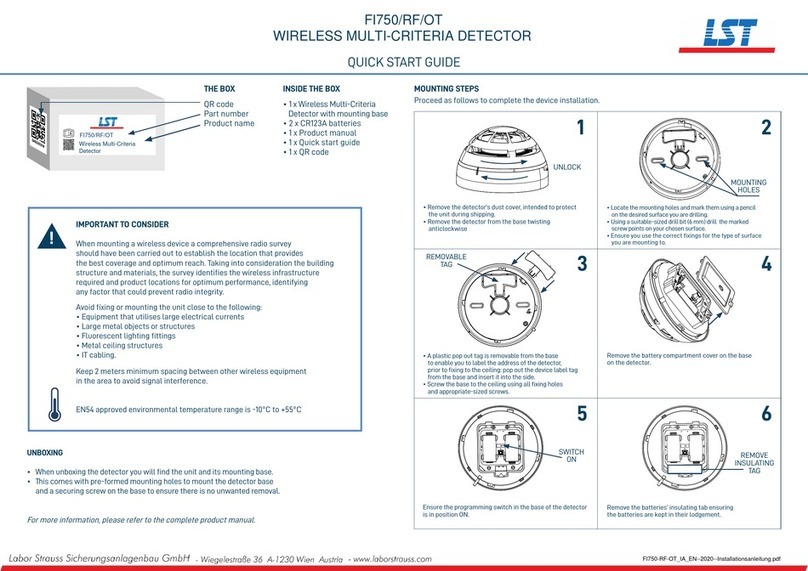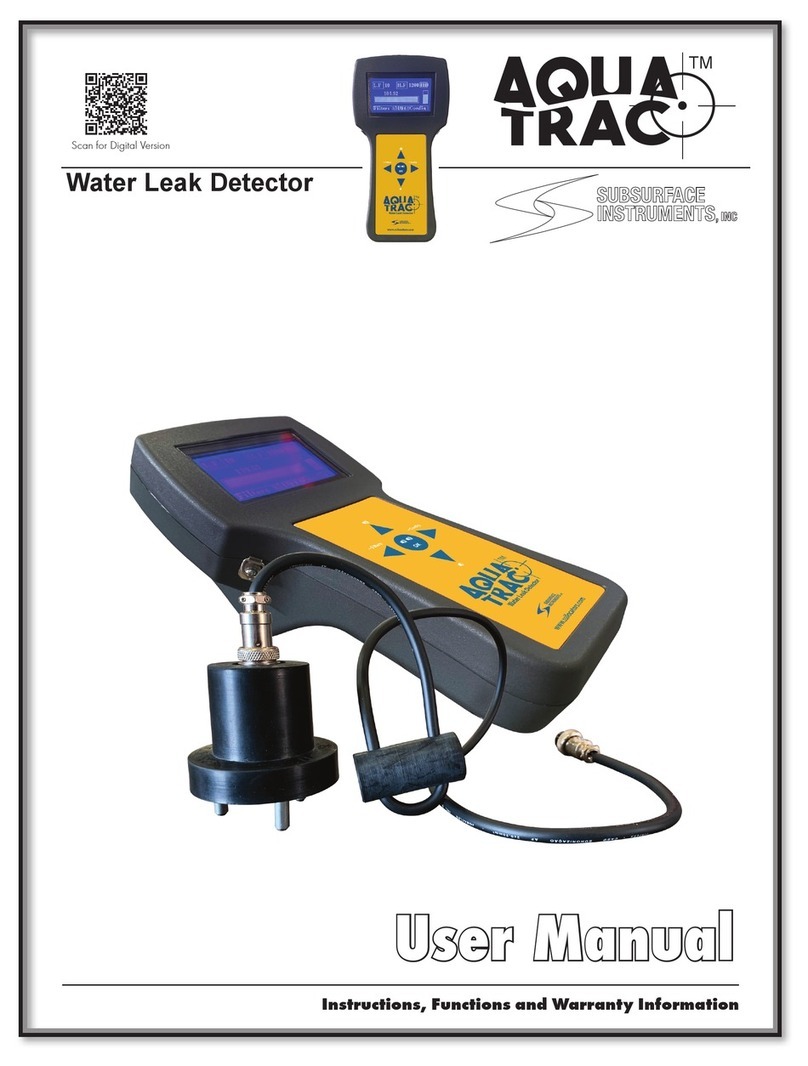EG AIR EGVOC-100 User manual

Multifunctional Air Detector
User Manual
Be sure to carefully read this user manual regarding use and keep it for
future reference.

I. Introduction
This product is a multifunctional air detector that detects Formaldehyde
(HCHO), Total Volatile Organic Compounds (TVOC), and Particulate Matter
<2.5 micron-sized particles (PM2.5) with clock and air quality record chart.
As a professional and scientific air detection device, it combines
advanced sensor technology with a built-in fan to allow real-time
monitoring of formaldehyde (HCHO), total volatile organic compounds
(TVOC), and PM2.5 on its digital LCD display.
Features:
2.8" color liquid crystal display (LCD)
User adjustable alarm threshold to alert of hazardous conditions
Green/yellow/red indicator corresponding to three air quality levels:
Fresh, Unqualified (i.e. borderline fresh but not qualified as fresh),
and Polluted.
Large 2200 mAh capacity Lithium battery
5V 800mA Micro USB charging
Low battery warning


Why measure TVOC and Formaldehyde? TVOCs are carbon-containing
compounds produced by synthetic processes, materials, and organisms.
Formaldehyde has suspected links to nasal cancer and lung cancer and
emitted from many household materials. Most known carcinogens are
synthetic organic compounds as they can interact with DNA to cause
mutations/cancer. A combined measure can give a picture of relative
indoor pollution levels and synthetic gas accumulation.
DIRECTIONS TO MEASURE AIR QUALITY
1. Charge device on receipt until battery level is at least half full
before initial use. Power on device to determine battery level.
Place device in a well ventilated area for 20-60 minutes.
2. Power on device. Detector will begin initiation process for 3 minutes
allowing sensors to preheat and fan to draw in fresh ambient air.
This is necessary for accurate results. LED screen will display the
countdown number from 180 to 0 seconds.
3. To measure air quality, place device in any location for at least 5
minutes for most accurate and stable readings of formaldehyde
(HCHO), TVOC, and PM2.5.
4. After detection, turn device off and store in a cool, dry area.

5. If item is newly purchased or has not been used for long periods, it
may accumulate gases from packaging that can affect detection
results. In this case, place the device before use in fresh well-
ventilated air for at least 20 minutes, leaving it unused during this
period. Should results appear inaccurate despite ventilation,
consider calibration by referring to CALIBRATION procedure.
CALIBRATION
Like all scientific instruments, you can calibrate it initially or after long
storage for greatest reproducibility and accuracy of results.
Calibration procedure is for formaldehyde and TVOC sensor. PM2.5
particular matter sensor does not require calibration. This procedure is
best done OUTDOORS where formaldehyde and TVOC levels are
generally negligible.
Video of procedure for calibration:
https://www.youtube.com/watch?v=Y9ZdjQy2qAg
1. Turn on unit by sliding left sided button upwards.

2. Allow device to fully start up by allowing TVOC counter to count to 0.
3. Place device in a CLEAN OUTDOOR AIR environment for 5+ minutes
where there is no formaldehyde or TVOC. Putting the device outside for
at least 5 minutes allows full circulation of outside air into the device.
Putting the device outside longer may be even better. Place the device
outside before proceeding further.
*Generally outdoors is a clean environment with negligible
formaldehyde and TVOC. Do this procedure away from traffic or
combustion sources.
4. Push center button once to enter Menu and 2 additional times to
highlight "Sensor Calibration" in red.
5. Push the left < button to select "OK"
6. Push the left < button to select "Calibrate"
7. Push the left < button twice to select "OK" and confirm while outside.

8. Push the right > button twice to select "Back" and exit to the main
screen. You will see that device has set the HCHO and TVOC readings
as 0.000 mg/m3.
You can confirm device has been calibrated after exiting to the
main screen and seeing device reads 0.000 mg/m3for HCHO
and TVOC. Calibration means device has set 0.000 mg/m3as
corresponding to clean outdoor air which generally has
negligible or near zero HCHO and TVOC. One can think of
calibration as zeroing a weight scale. HCHO and TVOC are most
commonly emitted by synthetic materials and accumulate
indoors and degrade outdoors. DO NOT CALIBRATE unless you
have access to clean air free from formaldehyde and TVOC (organic
compounds). Avoid calibrating indoors where HCHO and TVOC are
usually higher. If you try calibrating your device indoors (NOT
recommended), you will notice that the device will read 0.000 mg/m3
indoors and will show low and inaccurate numbers.

Why are there significant differences in HCHO and
TVOC readings at different times?
There can be large variations in formaldehyde (HCHO) and TVOC
readings within a house on different days and in different rooms.
The total volatile organic compound (TVOC) readings can vary by
magnitude of 10 or more on different days. Anything from cooking to
perfume to body odor near the device can cause large variations in the
TVOC readings. Think of the device as a very sensitive electronic nose.
Remember to calibrate ESPECIALLY if you are getting inaccurate
readings or after storage as most product boxes are made from a large
amount of synthetic materials that emit HCHO and TVOC's and can
cause inaccurate readings.

Why is the TVOC reading 9.999 mg/m3?
Make sure there are no fragrances, body odors, perfumes, smoke,
aromas, detergent or cooking smells near the device as these all are
benign sources of total volatile organic compounds (TVOCs). They will
lead to higher TVOC concentrations and an elevated or 9.999 mg/m3
reading as the device is sensitive and the human nose is often exposed
to TVOC concentrations far greater than 10 mg/m3. Do not be alarmed
if TVOCs are elevated as TVOCs include any organic or biologic odors
dispersed in the air, the majority benign. If you take the device
outside, the TVOC reading should be near 0.000; if not, please be sure
to calibrate the device.

AIR LEVEL QUALITY AND GRADE
1. When formaldehyde (HCHO) concentration is less than 0.080
mg/m3 and PM2.5 is less than 55, LCD screen displays Level as
Fresh in green and air quality is fresh.
2. When formaldehyde (HCHO) concentration is between 0.080 to
0.300 mg/m3or PM2.5 is between 55 to 250 mcg/m3,LCD
screen displays Level as Unqualified in yellow, meaning air is in a
borderline condition not qualified as Fresh but not meeting criteria
for hazardous pollution.
3. When formaldehyde (HCHO) density is greater than 0.300 mg/m
3
or PM2.5 is greater than 250 mcg/m3, LCD screen displays the
Level as Polluted or Hazardous in red, meaning air quality is
considered polluted and not safe for prolonged exposure. Corrective
action including ventilation of the area should be taken.
Formaldehyde Level Interpretation
The World Health Organization guideline for indoor air formaldehyde
concentration is 0.10 mg/m3(0.08 ppm). The California Air Resources

Board recommends an “action level” of 0.1228 mg/m3(0.1 ppm) and a
“target level” of 0.0614 mg/m3(0.05 ppm) or lower for homes.
PM2.5 Level Interpretation
According to the EPA, here are levels of PM2.5 or dust particulate
matter measuring 2.5 micrometers or less considered
healthy/unhealthy:
•GOOD: 0.0-12.0 µg/m3
•MODERATE: 12.1-35.4
•UNHEALTHY FOR SENSITIVE GROUPS: 35.5-55.4
•UNHEALTHY: 55.5-150.4
•VERY UNHEALTHY: 150.5-250.4
•HAZARDOUS: 250.5-500.4
Total Volatile Organic Compound Level Interpretation
Measuring total volatile organic compounds (TVOC), sometimes
chemical pollutants, are helpful but also more difficult to interpret

when determining air quality grade. This is because hazard levels with
TVOC are specific to the actual organic compound(s) in the air; some
synthetic organic compounds are hazardous whereas many natural
organic compounds are harmless.
The U.S. Green Building Council’s recommended healthy
building level is 0.500 mg/m3. However, data from hundreds of
homes measured by homeowners show the median value is 1.200
mg/m3, more than twice the recommended level. No absolute numbers
can be attributed to certain hazard as they vary with each organic
compound. Even one’s breath can cause a spike in TVOC levels but is
not considered harmful. However, relative TVOC levels can be useful
to measure if you are aware of the type of organic compounds present
such paint fumes or benzene/aromatic compound fumes. A house with
high mold concentration or building material off gassing is associated
with high TVOC levels. Treating high humidity conditions with a
dehumidifier or opening windows for venting is usually the most
effective strategy to reduce TVOC and formaldehyde levels.

Many harmful or carcinogenic compounds are synthetic organic
compounds that are easily inhaled into the body as they are “volatile”
or easily evaporated at room temperature.
Can you inform me how to convert mg/m3to ppm for
formaldehyde?
For formaldehyde,
At 760 mmHg and 20 °C, 1 ppm = 1.249 mg/m3 and 1 mg/m3=
0.801 ppm;
At 25 °C, 1 ppm = 1.228 mg/m3 and 1 mg/m3= 0.814 ppm.
Conversion factor from mg/m3 to ppm for TVOC varies with each
specific organic compound since molecular weights of individual
organic compounds are different. Identification of specific organic
compound is needed.

III. TYPES OF INTERFACE (MENU)
With the default Overall Interface, the time, battery level, air quality
level, formaldehyde (HCHO) concentration, Total Volatile Organic
Compound (TVOC), and PM2.5/10 concentrations are displayed.
To access the Menu Interface, press the center button labelled .
Pressing the center button again allows downward selection within the
menu in RED. The Left < button and Right > button select options on the
screen such as “OK” or “Back.”

•System Setting
You can set [OFF time] for time period before self-shutoff, [Version]
for interface style, [Factory Settings] to reset device, and [Time
Setting] to set the time and date.
•Alarm Settings
Default alarm threshold when alarm sounds is 0.10 mg/m3. However, the user
can set a different HCHO alarm threshold by pressing the left button to (+)

or right button to (-) alarm threshold. Alarm will ring when HCHO level is
exceeded.
To turn off alarm entirely, press center button within Alarm Interface
to highlight ON/OFF selection Blue. Press left button to turn alarm
ON/Open and right button turn alarm OFF/Close. Press center button to exit
to Menu Interface and “Back” to Overall Monitoring Interface.
•HCHO/TVOC/PM2.5 Records
You can view HCHO/TVOC/PM2.5 current record chart. ‘ is for minutes
and “ is for seconds elapsed.
IV. HOW TO CHARGE
This product comes with built-in lithium battery charged by 5V micro USB.
Suggested charging time is 4 hours. When charging, battery status
displays icon. When full charged, battery status displays
icon.
•When battery status turns to , battery level is low;
please charge device immediately to prevent shut off.

•When LCD screen displays "Lowest power, please charge",
device will turn off automatically after 3 seconds.
Continuous air quality monitoring can be achieved by charging
device with micro USB cable while monitoring and setting [OFF time]
for time period of 2 days found under System Settings within Menu
interface.
Caution
Do not disassemble, impact, or put it into any fire. If
there is severe bulging, please do NOT continue to
use. Do not put it in high-temperature environment.

V. TECHNICAL PARAMETERS
•Display Mode: High-definition liquid crystal display (LCD) with
240 x 320 resolution
•Product Dimension: 150 x 70.8 x 43.6 mm
•Product Weight: 188 g
•Battery Capacity: 2200mAh
•Lithium Battery Input: 5.0V, 800mA
•Charging Temperature: -10°C - 45°C
Operation Environment
•Atmospheric Pressure: 86Kpa - 106Kpa
•Humidity Range: 20% - 85%
•Working Temperature: -10°C - 45°C
•Storage Temperature: -20°C - 50°C
Formaldehyde or HCHO
•Test Item: atmospheric HCHO
•Test Range: 0.000-1.999 mg/m3
•Sampling Method: Diffusion Type
•Concentration Unit: mg/m3

•Sensor type: electrochemical semiconductor sensor
Total Volatile Organic Compounds or TVOC
Test Item: TVOC in the air including potentially
carcinogenic aromatic compounds and benzene
Test Range: 0.000 - 9.999 mg/m3
Sampling Method: Diffusion Type
Concentration Unit: mg/m3
Sensor type: electrochemical semiconductor sensor
PM2.5/PM10
•Tested particle diameter: PM2.5 or <2.5 micrometer particle
concentration (PM10 via calculation from PM2.5)
•Sampling Time: 3 seconds
•Sensor type: Laser Detection Sensor
•Detection range: 0-999 mcg/m3
Produced for and Manual written/edited by EG AIR
Table of contents
